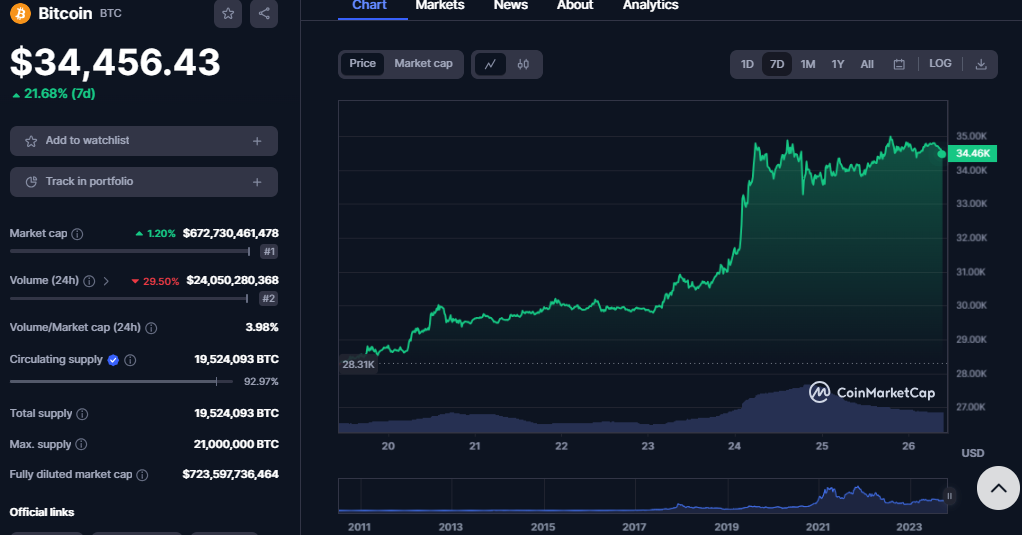
The crypto market has started entering a bullish phase at the beginning of 2024. Unlike previous halvings that focused solely on Bitcoin’s rise, this event is also accompanied by the resurgence of meme altcoins and Ethereum layer-2 solutions.
This presents a very intriguing opportunity for investors and traders looking to explore innovative projects with great potential.
Ethereum Layer-2 solutions are specifically designed to enhance the scalability of its network. Here are five of the most promising Ethereum Layer-2 projects in 2024:
Arbitrum
Arbitrum Layer-2 Ethereum is the first highly potential project this year, with a market capitalization exceeding $2.8 billion, positioning itself as one of the major players in the crypto market.
This layer-2 solution leverages optimistic roll-up technology to address scalability challenges, offering much faster transaction processing times at lower costs compared to the main Ethereum network.
The development team has recently implemented the Atlas upgrade on its network, demonstrating its commitment to creating better scalability solutions.
This upgrade promises reduced transaction fees and overall network scalability improvements, providing a more cost-effective and efficient environment.
Arbitrum presents an attractive proposition for developers looking to build decentralized applications (dApps) and for users seeking a smoother experience on the Ethereum network.
Mantle
Mantle Network is a layer-2 scalability solution built on Ethereum. Validator nodes receive transactions from users and compress them into “compressed blocks” on Ethereum. This compression saves users on gas fees while increasing transaction throughput.
The network also employs a modular chain design. Unlike monolithic chains that handle transaction execution, consensus, settlement, and storage on the same network layer, Mantle Network processes these through different modules.
In its initial Mainnet version, the network operates as a Smart Contract Rollup with flexible data availability.
Mantle’s execution layer provides an EVM-compatible environment for transaction execution, sequencing blocks on L2, and sending root state data to L1.
Mantle DA, utilizing EigenDA technology, provides data availability services by storing callback data meant for L1 publication in traditional rollups. With its modular architecture and data availability through EigenDA, Mantle is one of the most promising Ethereum Layer-2 projects in 2024.
Linea
Linea Layer-2 Ethereum aspires to be the main gateway for Web3 interactions. Their commitment to security is evident in their diverse approach, including cryptographically secure zk architecture, partnerships with 20 security companies, and a robust reputation system.
The network uses lattice-based cryptography and zkSNARK verification technology to ensure the security of each transaction and the entire system. A diverse client base also strengthens security by eliminating single points of failure.
Linea has also partnered with 20 security companies to reinforce its ecosystem, provide real-time network monitoring, and ensure a strong post-incident response. This ensures comprehensive user protection.
The combination of innovative technology, collaborative approach, and commitment to security and decentralization makes Linea a very promising Ethereum Layer-2 project.
Starknet
Starknet is an innovative Layer-2 Validity-Rollup (or ZK-Rollup) solution built on Ethereum. This platform allows decentralized applications (dApps) to scale without sacrificing security, cost, or scalability.
This Ethereum Layer-2 solution works by aggregating transactions into STARK proofs calculated off-chain.
These proofs are then sent to Ethereum as a single transaction, resulting in high throughput, shorter processing times, and lower costs.
To achieve scalability, Starknet moves transaction processing off the Ethereum Mainnet while keeping transaction summaries on-chain.
Transactions are organized into specific blocks, processed off-chain, and then bundled into a single transaction.
Starknet uses STARK proofs (Scalable, Transparent Argument of Knowledge) for verifiable computations, ensuring transaction integrity and execution. This innovative solution addresses Ethereum’s scalability issues, enabling developers to easily build their applications.
Optimism
Optimism is a Layer-2 solution known for its “Optimism rollup,” an advanced technology to enhance the security and scalability of the Ethereum network or other EVM-compatible networks.
Specifically, Optimism utilizes the consensus mechanism of its parent blockchain (such as PoW or PoS) rather than building its consensus system. In this context, Ethereum acts as the parent blockchain for the OP Mainnet project.
Optimism is designed to ensure that smart contracts on Layer 2 (OP Mainnet, OP Sepolia, etc.) and the underlying Layer 1 (Ethereum Mainnet, Sepolia, etc.) can connect directly using a “Sequencer.” This allows for the easy transfer of ETH or tokens between the two networks.
The ideas and techniques proposed by Optimism simplify the relationship between Layer 1 and Layer 2, making it one of the most popular and promising interoperability platforms today.
Personal Note From MEXC Team
Check out our MEXC trading page and find out what we have to offer! There are also a ton of interesting articles to get you up to speed with the crypto world. Lastly, join our MEXC Creators project and share your opinion about everything crypto! Happy trading! Learn about interoperability now!
Join MEXC and Get up to $10,000 Bonus!
Sign Up


